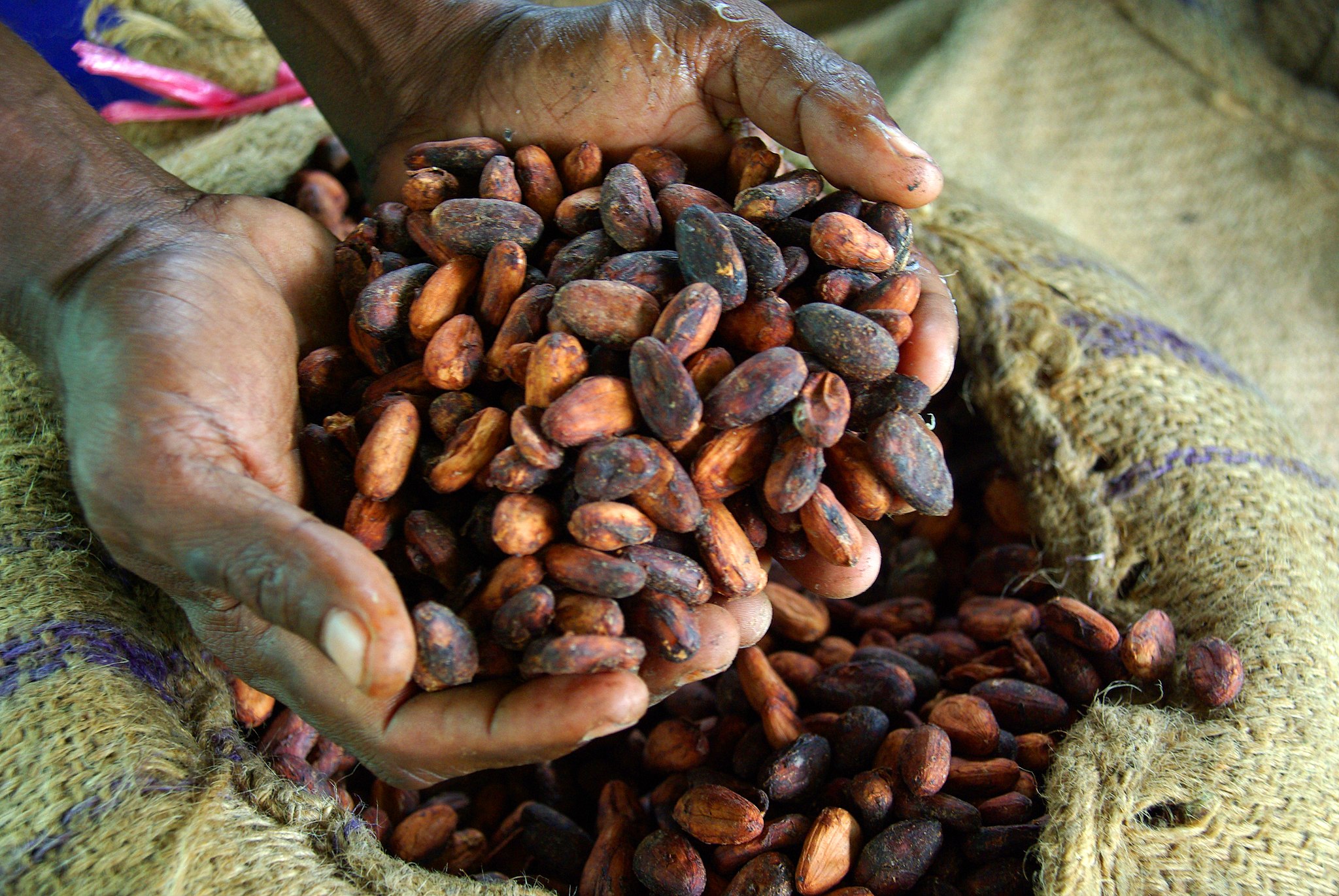I love hot cocoa. A friend taught me a great recipe: cocoa powder + maple syrup + homemade cashew cream + hot water. I add a pinch of cayenne pepper for bite. (Cashew cream: soak unroasted/unsalted cashews overnight in water, then liquefy them in a Vitamix.)
Before you try to make this, you need to be aware of an important distinction. In American grocery stores, you’ll find two kinds of cocoa: cocoa mix and cocoa powder. They’re not the same.
Based on the selection of brands and varieties, cocoa mix seems to be more popular. You’ll find it in the same aisle as coffee and tea — i.e., the store assumes that if you want to drink cocoa, you want cocoa mix.
It’s a safe assumption. If you want a cup of hot cocoa, the mix is more convenient: it includes powdered sweetener, creamer, and (in some cases) frills such as freeze-dried marshmallows. You simply add hot water, et voilà — a sweet cup of cocoa.
That’s not what you want for this recipe. Instead, you want cocoa powder, which is just the primary ingredient without the extra stuff.
It may seem subtle, but this distinction matters. Here’s how Wikipedia describes cocoa powder:
Dry cocoa solids are the components of cocoa beans remaining after cocoa butter, the fatty component of the bean, is extracted from chocolate liquor, roasted cocoa beans that have been ground into a liquid state. Cocoa butter is 46% to 57% of the weight of cocoa beans and gives chocolate its characteristic melting properties. Cocoa powder is the powdered form of the dry solids with a small remaining amount of cocoa butter. Untreated cocoa powder is bitter and acidic.
See that last sentence? That’s why many folks find the taste of plain cocoa unpleasant. It’s also why you won’t find it in the drinks aisle; you must look for cocoa powder under baking supplies instead. (Cocoa is a key ingredient in cakes, cookies, brownies, etc.)
Having both cocoas in the same aisle could be confusing since they come in similar packages: they’re both sold in bags or cans, prominently brown, with the word “cocoa” spelled out in large letters. Small(er) print tells you which type you’re getting.
We use labels to make new distinctions, and unfamiliar distinctions can be confusing. Recently, my wife bought an unfamiliar brand of cocoa powder. The can clarifies the distinction with the following label: Baking Cocoa, with the word “baking” rendered as large as “cocoa.”
A few days ago, my daughter wanted to make hot cocoa. She looked in the pantry and said, “We’re out of cocoa.” I replied, “Mama just bought some.” My daughter looked again and said, “But we seem only to have baking cocoa.”
I explained that “baking” cocoa is what we’ve been using all along; it’s just that most people use it for baking. This cleared things up. But it made me think about the perils of limiting distinction-making to labels.
Cocoa powder manufacturers are in a bind: they must clarify what kind of cocoa you’re buying. Ideally, they’d call plain cocoa simply “cocoa,” with no other labels. But this would confuse people who think of cocoa as cocoa mix. (I expect this is the norm.)
There are a few alternatives, but they’re ambiguous. “Cocoa powder” itself isn’t really helpful — other than by convention — since cocoa mix also comes in powder form by default.
Conversely, manufacturers could label cocoa mix as “drinkable” cocoa. But that would also be ambiguous, since you can make hot cocoa using cocoa powder (as with my friend’s recipe.) And again, this wouldn’t help people who expect cocoa mix when they see plain “cocoa.”
That leaves manufacturers with the somewhat confusing option of using a narrower term (“baking” cocoa) for the version of the product that has broader uses. (I.e., you can make hot cocoa using cocoa powder, but cocoa mix can only be used to make hot cocoa.)
Bottom line: understanding distinctions isn’t just up to labels. We also understand distinctions through context (e.g., what aisle is the product in?) and social cues (having someone explain that “baking” cocoa is suitable for more than just baking despite what the label says.)
How many of your labels are compromises of this sort? How might you make things clearer through the mindful use of context and social cues? These things matter: mindful distinction-making can be the difference between a bitter or sweet outcome. 😜☕️
